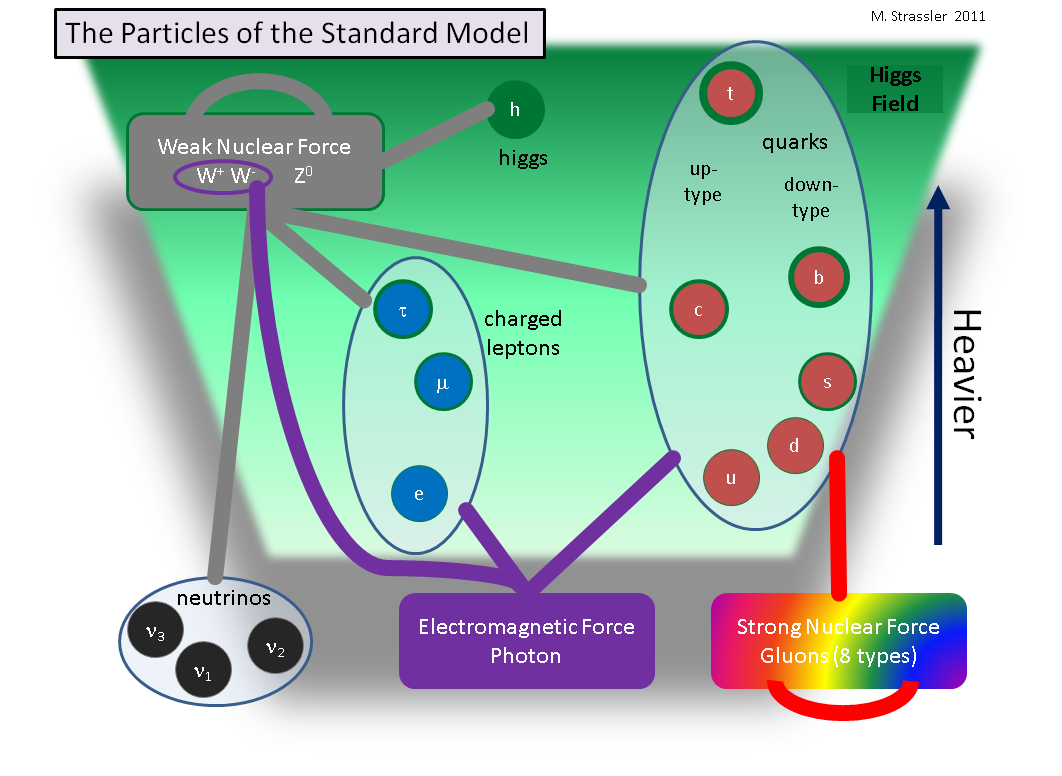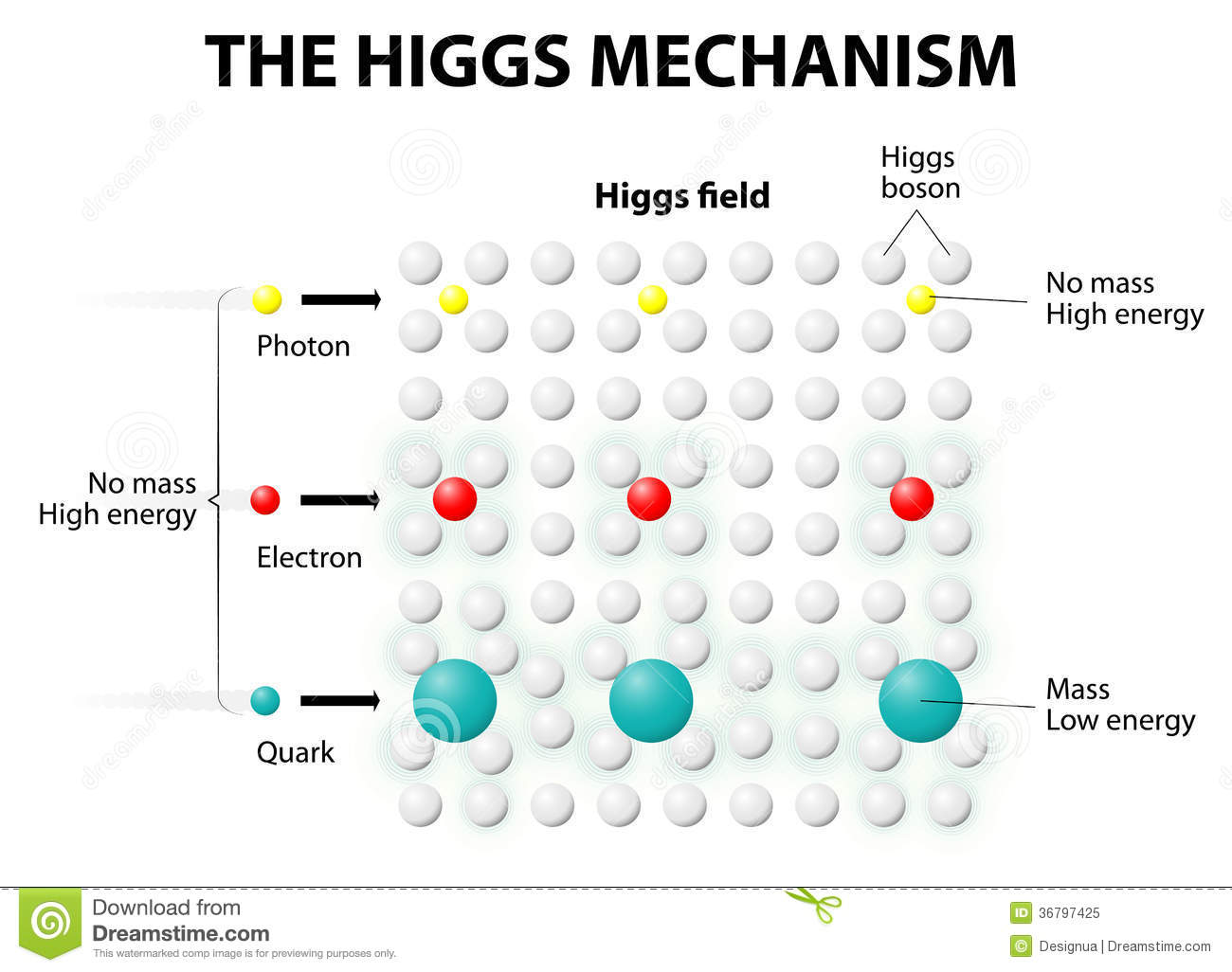Higgs field
The Higgs Field and mechanism are, on a basic level, what gives mass to subatomic particles. The Higgs Boson is a disturbance in the field. Essentially, the interactions with the field give a particle mass. These subatomic particles only have mass when interacting with the field.
The Main Idea
As explained above
Abackbone
A Mathematical Model
The mathematical equations that gave us the idea that something like the Higgs Boson was necessary are quite facile. The need for this particle arose due to the need for a way for particles to acquire the mass that we know they have today through experimentation and observation. Simplistically, if an electron or some other elementary particle, lacked mass, this means that it would travel at the speed of light. This is modeled through the equation : m=m0÷√((v)2/(c)2)
If these particles were to move at the speed of the light, they would not bond or interact in the ways that we understand them to. This gave rise for the need for another particle or field to exist that would grant these particles mass, thus allowing them to interact in the conventional way. This field interacts more with heavier particles and less with lighter particles. Another reason scientists knew the Higgs Boson or something like it must exist was because of broken symmetry. Spontaneously Broken symmetry is symmetry that is preserved by physical laws but one that is broken in the actual world. An easy way to visualize this, is a circular dinner table with people seated where there are glasses inbetween each person. The symmetry is preserved here because a person can either choose to take the glass on his left or right and either path is exactly the same. However this symmetry is broken spontaneously as soon as one person is driven by thirst to choose a glass. Once a glass is chosen by one person, everyone else must follow suit and choose their glass on the same side, thus removing the symmetry of allowing both paths to be equal. The weak force has an especially short range, which means that the bosons that communicate this force must consequentially have mass. However high energy predictions for bosons that have mass, results in an interaction rate greater than 100%, which is clearly not feasable. The only model that allows reasonable predictions with massive bosons, is the Higgs mechanism. Because this mechanism allows the weak force symmetry to break spontaneously, also allowing for predictions with massive bosons.
What is the Higgs Field?
A field by definition in quantum physics is an object that can produce particles in space. With each field producing its own unique particle. These particles, Higgs particles, are so massive that they are not found in ordinary matter, the only way to observe these is with high energy collisions. The Higgs field is what gives particles their mass. When a particle interacts with this field, it gains its mass. More massive particles interact more often with the field, while less massive particles interact less with the field. This field prevents the weak force from exerting itself over large distances, an in a way "intercepts" this force at a distance of trillionth of a centimeter. By intercepting, the Higgs Field allows particles to act like we predict them to under all circumstances because particles move freely at small distances but are hindered over larger distances.
History
On July 4th, 2012, it was announced that a new particle,related to the Higgs Mechanism, had been discovered by the Large Hadron Collider near Geneva. Spokespeople from CMS and ATLAS (the two major LHC experiments) announced that a particle related to the Higgs Mechanism had been found. This discovery was especially impressive, because no one could guarantee that such a particle was to exist. In contrast to most discoveries in physics, scientists can usually guarantee that something exists before it is discovered. There is much we still don't understand about the Higgs Mechanism, but with further experimentation at higher energy levels, the future may hold discoveries of equal or greater magnitude than this one very soon.
Images
Further reading
https://www.youtube.com/watch?v=joTKd5j3mzk - The Higgs Field, Explained
https://www.youtube.com/watch?v=JqNg819PiZY - A Lecture from Stanford Professor Leonard Susskind
External links
References
"Higgs Discovery: The Power of Empty Space"-Lisa Randall "The Particle At The End Of The Universe"-Sean Carroll


